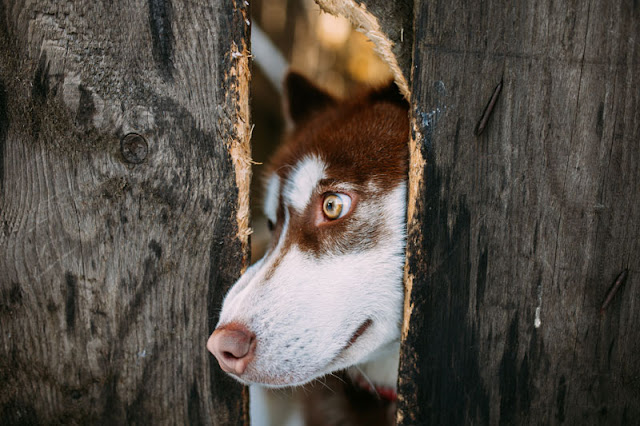Talking About Animals: The Vegan and the Foxhunter
There are surprises in the language used to
talk about animals, and even similarities between a vegan and a foxhunter in how they use language.
You might also like:
Animals, pets and vermin
Unanticipated animals: What happens when pets appear in research interviews?
Going for a song? The price of pet birds
 |
| Photo: Graham Taylor (Shutterstock) |
By Zazie Todd, PhD
This page contains affiliate links which means I may earn a commission on qualifying purchases at no cost to you.
This page contains affiliate links which means I may earn a commission on qualifying purchases at no cost to you.
A vegan and a fox hunter have completely
opposed views of animals. Yet analyzing how they talk shows some similarities,
according to research by Guy Cook (King’s College, London). He studied
interviews with a spokesperson for the Vegan Society and a spokesperson for the
pro-foxhunting group The Countryside Alliance.
Foxhunting has been illegal in the UK since
2005, and only a quarter of one per cent of the UK is vegan, so both groups can be considered outside the mainstream.
Prof. Cook says, “These two interviews and their
language provide evidence of two conflicting ideas of human animal interaction,
which despite their differences provide a mirror image of each other, as it
were flanking mainstream ideas and discourse.”
“One evokes and seeks to preserve a
vanishing kind of relationship, which, while intimate, was nevertheless
unequivocal in its view of animals as different from humans in ways which make
their killing for sport or meat morally unproblematic. The other envisages a future moral order
which supersedes that of the present, and seeks to accord animals the same
moral and personal status as humans.”
Both people use ‘she’ and ‘he’ to refer to
animals, rather than ‘it’. The difference is that for the vegan campaigner, it
is the actual sex of the animal, whereas for the foxhunting campaigner,
tradition dictates the pronouns regardless of the animal’s sex.
For Amanda Baker (Vegan Society), using
these pronouns is part of speaking about animals as persons. For example, speaking
about the dairy industry she says “If the calf is female she may very well,
depending on who the father is, be raised to become a farmed cow for milk…” She
uses human terms like son, daughter, sexism and slavery when referring to
animals.
Baker talks about how the language used
might influence people’s perceptions and beliefs. She prefers the term ‘companion
animal’ to ‘pet’. “One word that I started thinking about recently is ‘person’
and the concept of ‘personhood’,” she says. “We have five cats in our family
who’ve been rescued from various situations and I very much relate to them as ‘individual
people of the feline variety’ if you will.” Similarly she says, “a pig is a
person not a meal.”
In contrast, for Tim Bonner (Countryside
Alliance) the fox is always ‘he’ and a hare is always ‘she’, according to
tradition. He says “’Him’ to the fox and ‘her’ the hare. Traditional. Always
has been. The hare is ‘Puss’ and she’s a ‘she’ and the fox is ‘Charlie’ and he’s
a ‘he’.”
Bonner also uses language in a way that he
hopes will influence people’s views, such as the way he uses words such as
welfare and cruelty. Just like Baker, he is aware that his language choices are
different from those of most people. He says, “a lot of people find it
difficult to understand that in the same way they find it difficult to
understand how you can love a fox and hunt it or have huge respect for deer and
shoot them but you can and we do.”
Both interviewees talk about emotion in
relation to animals. For Baker, this is apparent in the way she talks about
animals as persons, whereas for Bonner there is what Cook calls “the easily
ridiculed hunter’s claim to love and respect the individual animals they kill”
which nonetheless includes knowledge of the animal and its behaviour.
Most of the interviews refer only to a
small subset of animals, something also found in a 2013 study of what animals
mean to people by Alison Sealey and Nickie Charles. Prof. Cook says, “In this respect, the opposed views expressed in the two
interviews analysed in this article are simultaneously very contemporary,
reflecting a highly reduced view of animal life on earth, but also not
contemporary enough, in that awareness of impending ecological collapse does
not figure in their concerns.”
This research is part of a wider project
called "‘People’, ‘Products’, ‘Pests’ and ‘Pets’: the discursive representation of animals." It includes interviews with people from
various organizations including the RSPCA, Badger Trust, an organic abbatoir
and wildlife presenters. The project aims to provide a deeper understanding of
how people talk and write about animals. If you want to know more, you can
follow them on twitter.
When you are talking about animals, do you
refer to them as ‘he’ and ‘she’ or ‘it’, and does it depend on whether you know
the animal?
Reference
Cook, G. (2015). 'A pig is a person' or 'You can love a fox and hunt it': Innovation and tradition in the discursive representation of animals Discourse & Society, 26 (5), 587-607 You might also like:
Animals, pets and vermin
Unanticipated animals: What happens when pets appear in research interviews?
Going for a song? The price of pet birds
As an Amazon Associate I earn from qualifying purchases.




